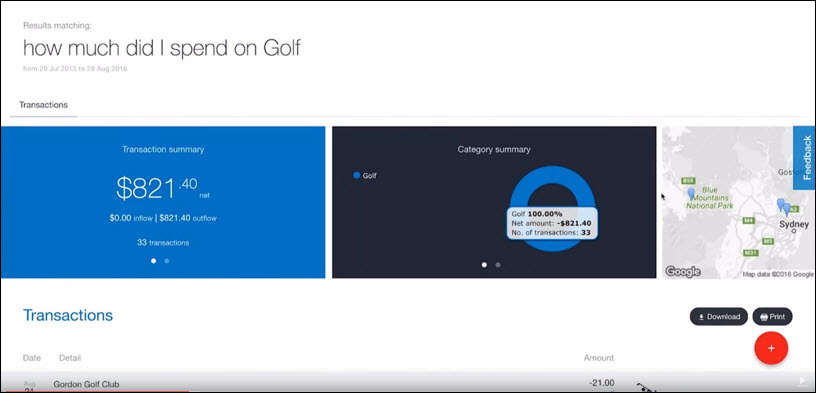 NEWS
NEWS
 NEWS
NEWS
 NEWS
NEWS
Bankers view customer-facing digital technology with a mix of excitement and fear. While online banking and mobile apps have made it easier than ever for customers to do business, they also threaten to blur the brand equity that banks have worked so hard to cultivate. After all, one online banking system looks pretty much like any other, right?
Macquarie Group Ltd. didn’t think that had to be the case, so Australia’s largest investment bank has rethought the consumer banking experience. The passage of a new law requiring instantaneous funds transfer in the country got bankers mulling new ways to go beyond balance inquiries and check-writing and into the world of personal financial management.
“We were given a mission to build a digital experience that was highly customized and intuitive,” said Rajay Rai, digital architect at Macquarie’s banking and financial services organization. “We wanted to earn a place on our customers’ home screens.”
Macquarie based its vision not on other banking applications but on the kind of intuitive, task-focused apps people use on mobile phones. “Our competition is the last application that you used, such as be Instagram or Uber,” Rai said.
The application was designed enable customers to analyze, forecast and budget around three themes:
“Traditional banking would only look at historical information using an accounting construct,” Rai said. “Our vision was to address solutions related to forward thinking.”
The team quickly determined that the bank’s relational database management system wasn’t flexible enough for the task. After first experimenting with a pure open-source approach, they opted for DataStax Enterprise from DataStax Inc. Based on Apache Cassandra NoSQL technology, DataStax Enterprise offered the speed and scalability the bank needed to analyze streaming data against a large store of historical information while also supporting a much great variety of data types than the structured relational engine would. Integration with Apache Solr made search fast and easy and Apache Spark was brought in for near-real-time processing.
The combination gave the bank the right balance of performance and functionality. “The data and the technology are co-located so there’s no single point of failure,” Rai said. “Cassandra with Solr provides you with search, and Cassandra with Spark provides real-time analytics. You don’t have worry about expensive ETL (extract/transform/load) processes. We can provide analytics without sacrificing performance.”
A small team of six engineers tackled the project and in just six months created a completely redesigned online service that enables customers to set personal goals, manage budgets and plan investment and spending strategies. The new retail banking system, which went live on Sept. 1, adapts to customer behavior, predicts their needs and learns how customers behave in order to dispense customized advice. The system taps into both historical and current data streaming in from accounts, loans and credit card transactions. Machine learning algorithms scour for patterns and recommend ways to spend more efficiently.
The application also handles a wide variety of data types. For example, customers can attach receipts, tag information and view their spending history from an assortment of perspectives, such as location, vendor and expense type. Email and text notifications alert them to thresholds before they over-spend.
Working with Cassandra required thinking differently about how to manage data, Rai said. The flexibility of the NoSQL model gave the team flexibility they had never seen in the relational world and enable a more iterative, DevOps-style form of development. Months-long planning cycles were scrapped in favor of revisions every few days. Feedback was incorporated continually. “It’s a cultural thing. You need to test and learn, test and learn and grow as you go,” Rai said. “Long, drawn-out planning sessions don’t work today.”
But the flexibility of the NoSQL platform, combined with search and streaming analytics, opened up a world of new possibilities. “We can combine historical transactions with full-text descriptions, and there’s no limit on the amount of data we can use,” Rai said. “We can run batch jobs, micro-batches and analytics. We can write data anywhere in the cluster. And because it’s a ring architecture, the moment you write data to one cluster it replicates to all the others.”
Rai offered more details and a demo in a presentation at DataStax’s recent Cassandra Summit (below).
THANK YOU